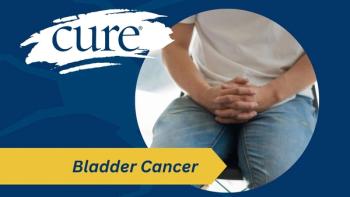
Study Highlights Need for Patient Education Surrounding Opioid Use for Cancer Pain
Increasing doses, cutting pills and self-tapering of opioids can lead to safety risks for patients with cancer; however, this is an issue that often goes unaddressed.
Patient misuse of taking opioids — like increasing doses, cutting pills and self-tapering – is a serious issue concerning patient safety, according to findings published in the Journal of Pain and Symptom Management.
While concerns surrounding the opioid epidemic are typically focused on clinicians’ prescribing practices, many fail to think about patients’ self-management of their opioid use for cancer pain, which can lead to safety risks. However, this patient population is typically excluded from studies to guide policy initiatives on prescription opioids.
Therefore, the researchers used freelisting (65 patients) and open-ended semi-structured interviews with a racially diverse subgroup (32 patients) at a National Cancer Institute-designated cancer center in Philadelphia.
“Most patients in this study could not take advantage of the pain relief afforded by prescribed opioids because of the need to balance pain relief with opioid risks and societal stigma of having to take ‘hard pills.’ Some patients found it troubling that opioids were their principal or sole pain management option and described taking charge and stewardship of their own prescribed opioids,” the researchers wrote.
Those in the freelisting group reported that “pain relief” was a primary term in relation to taking pain medications preceding ‘‘addiction’’ concerns. Those in the interview group described some unsafe practices — such as reducing opioid dose by cutting pills; self-tapering off opioids; using extended-release/long-acting opioids on an as-needed basis; mixing over-the-counter, nonopioid analgesics; and using illicit drugs to avoid ‘‘harder medicines’’ with their opioid—all of which they considered “normal.”
“Our study extends previous findings by elucidating that patients’ self-management heuristics with the singular focus on limiting opioids use (‘last resort,’ intentionally stopping and resuming opioids, using (long-acting) opioids on an as-needed basis, increasing duration between opioid doses, and use of cannabis ‘first’ to delay opioids) may expose patients with cancer to underappreciated safety risks,” the researchers wrote.
Patients also reported that they felt their physicians were too quick to prescribe opioids without providing alternatives.
“The key implication of these findings is the need for urgent, effective, and patient-centered educational interventions to ensure that opioids are taken as prescribed, notification of clinicians if there are gaps in opioid use before resuming a previously prescribed opioid dose, and seeking clinicians’ help for appropriate opioid tapering and discontinuation if patients have been taking scheduled (long-acting) or stable doses of short-acting opioids.”
With this, the researchers recommend following the guidelines issued by the CDC and Health and Human Services for appropriate opioid tapering is important for patients to discuss with their physicians. Moreover, it is important that patients and family members should be educated to better understand the signs of opioid toxicity.
Lastly, patients should participate and be involved in opioid stewardship programs designed to reduce stigma for patients who continue to need opioids to relieve moderate-to-severe pain.
“There is an urgent need to clarify what comprises best practices in opioid self-management and translate the evidence into patient-centered interventions,” the researchers wrote. “Patient self-management practices should be assessed as part of the clinical quality measures similar to other measures of for assessing risks and addressing harms of opioids.”





